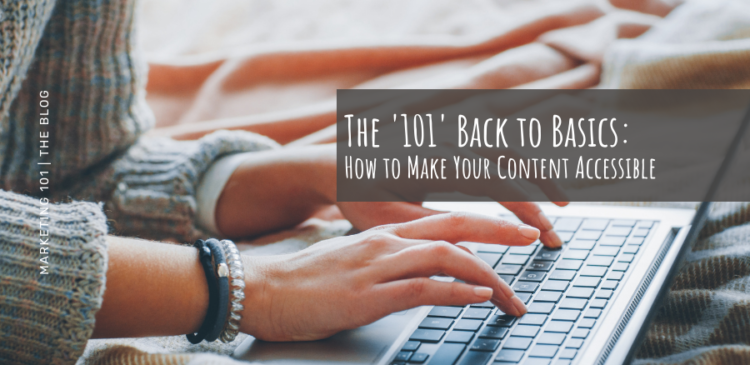The “101 Back to Basics”: How to Make Your Content Accessible

Having accessible content on your website and social media is one of the most important aspects to consider with your marketing strategy.
Ensuring your content is not only inclusive but accessible to everyone, including those with disabilities, is essential.
We’ve collected some helpful tips for you to read and take away to make your content available to all!
Be clear and concise.
Writing creatively or imaginatively is so fun! We’re not saying ditch the adjectives and make your content plain, but we are suggesting cutting down on the waffle and making your content both clear and concise.
Avoid technical jargon or specialist terms – write as if you’re trying to explain something to someone who doesn’t work in your industry (but in a non-patronising way). If you do use technical jargon, then be sure to explain what it means.
This serves to not only benefit individuals with cognitive disabilities but helps to improve the readability of your content too.
Use meaningful headings.
This has a bit of a “two birds, one stone” message behind it. Using clear headings that outline exactly what you’re talking about not only makes it easier for the reader to understand, but can also be used to help boost your SEO by including your main keywords.
Use descriptive headings that accurately reflect the content beneath them. This will help the reader grasp exactly what the main points of your content are and decide whether it’s relevant to them.
Use ALT Tags for images.
An ALT tag (also known as an ALT attribute or ALT description) is essential for making images accessible to individuals who are visually impaired.
Make sure you’re providing descriptive ALT text that conveys the purpose of the image. This one is another double whammy, as it not only helps to aid those with visual impairments, but also contributes to your SEO as it’s helping you provide more context to search engines.
Be mindful of colour contrast.
Colour plays an important role to design ad branding, but relying on just colour can be problematic for individuals with colour vision deficiencies.
Ensure your choice of colours provides a good enough contrast, making text and important elements easy to read and stand out.
Include captions and transcripts for media.
Videos and podcasts are an ever-popular method of conveying information, however they may not be the best option for those who are deaf or hard of hearing.
Include transcripts, subtitles and captions for videos and podcasts to make sure that the message from the content is accessible to all.
Take a few minutes to assess your current marketing content. Is it accessible? What could you do to change it to make it more accessible?
Head over to our socials to gain more helpful marketing tips and guidance! We’re on Facebook, LinkedIn and Instagram.
